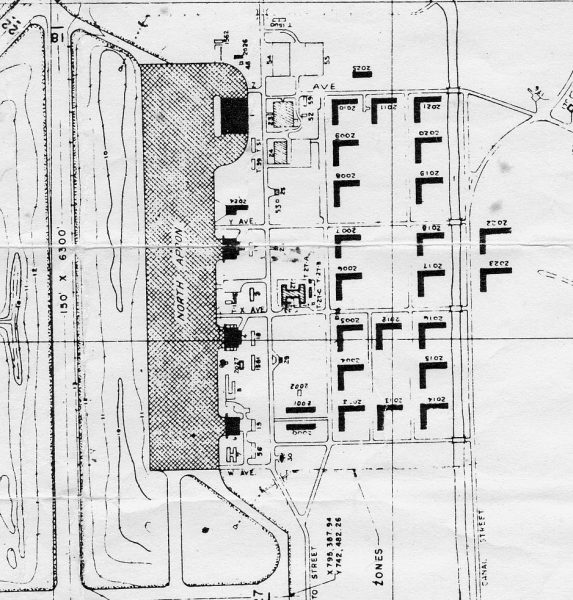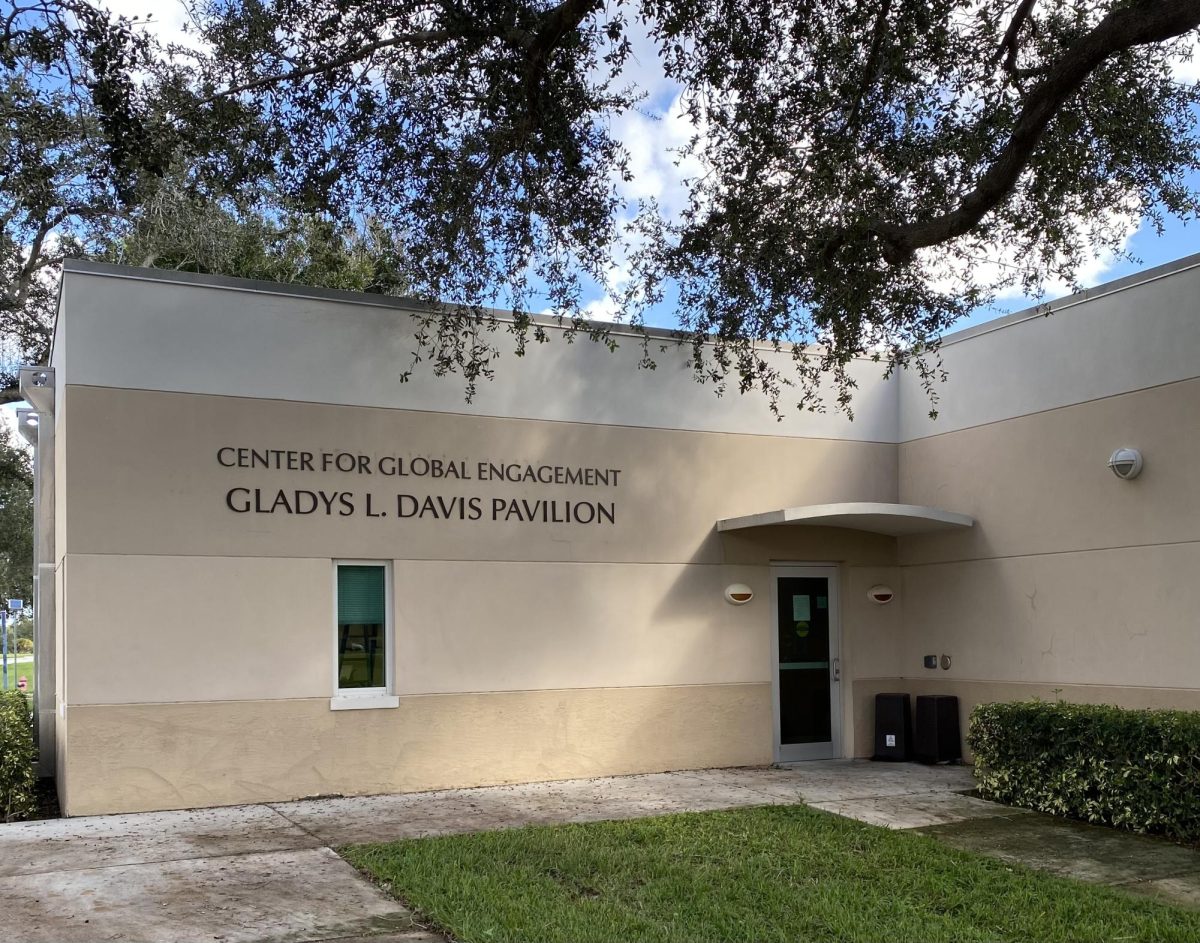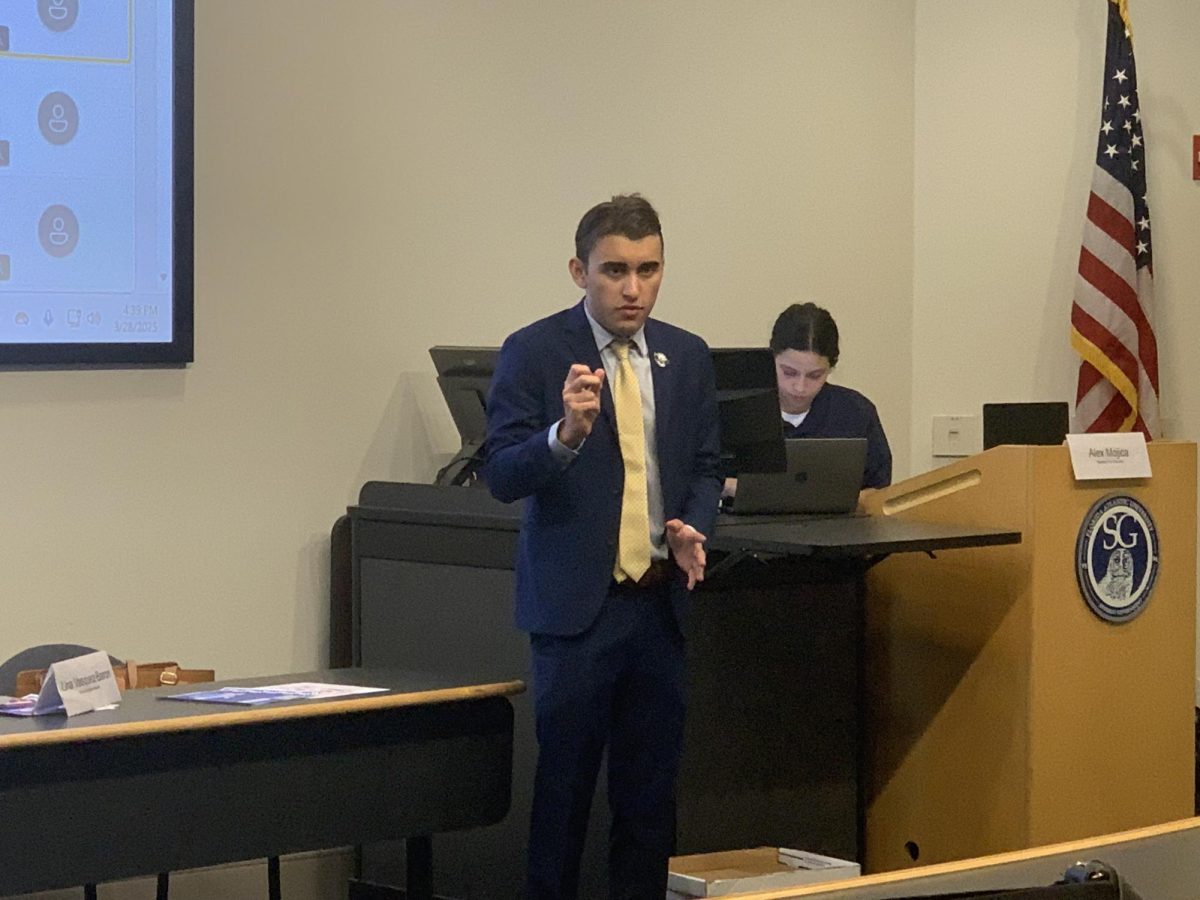The “T” in T-Building stands for temporary.
Florida Atlantic University’s Boca Raton campus houses four of these “temporary” buildings, which have defied that label by standing tall for over 81 years.
The buildings date back to 1942, when the area served as the Boca Raton Army Air Field (BRAAF) during World War II. In 1964, FAU opened its campus on the land where the base’s runways once were, according to Sue Gillis, the Boca Raton Historical Society curator.
Gillis stated there were originally 800 buildings on the base, but the section where FAU is now had only about 85 buildings. Based on BRAAF aerial maps, she counted around 15 T-Buildings remaining in Boca Raton today, with four in the northeast region of the FAU Boca Raton campus.
Sally J. Ling, author of “Small Town, Big Secrets: Inside the Boca Raton Army Air Field during World War II,” shared her expertise, having reported on the base since the early 2000s.
“It’s not the fact that there are buildings from World War II… It is what happened in the buildings,” Ling said, noting that the BRAAF base held top-secret radar technology that helped locate enemy crafts and ultimately win the war.
Ling stated that the radar system was first developed in England, but due to bombings and power issues—the operation was moved to the United States. Once finished, the radar was used at the Boca Raton base, which housed over 100,000 troops sworn to secrecy.
According to Gillis, the BRAAF base was mainly abandoned after World War II in 1945. Two hurricanes damaged most of the buildings in 1947, but the T-buildings that survived were built from concrete and Dade County Pine, a type of historic wood.
“They withstood the hurricanes much better and so they were incorporated when the campus was built. They just kept and used them,” Gillis said.
Azita Dotiwala, FAU’s senior director of budget and planning for facilities management, mentioned that the buildings are still vulnerable to hurricane damage because they don’t meet current building code standards for wind loads.
Gillis pointed out that about 15 T-Buildings were left when FAU was built. However, they were gradually demolished as the campus expanded. So, she helped start the BRAAF Preservation Society about 20 years ago to “save” these buildings.
“As an agency, we were able to bring to the attention of the president [of FAU] and so on that, if not glamorous, these are historically important buildings,” Gillis said, jokingly. While the buildings might not be the prettiest, she noted the vital role they played in World War II.

According to Ling’s book, about nine T-buildings stood in 2005. She recounted that one of the buildings, T-3, located by FAU’s Research Park, was struck by lightning during an electrical storm and burned to the ground in 2006.
As time went on, she observed that the other T-Buildings on the Boca Raton campus were torn down, one after another.
In 2007, university leaders decided to keep four T-Buildings to preserve their historical significance and use the space for academic and support programs, according to FAU spokesperson Jonathan Fraysure.
The remaining T-Buildings on FAU’s Boca Raton campus are T-5, T-6, T-10 and T-11. The buildings are between the FAU Police Department and A.D. Henderson & FAU High School.
According to Gillis, T-5 and T-6 are “H” shaped buildings that served as classrooms for radar training during World War II. Now, Dorothy F. Schmidt College of Arts and Letters occupies these buildings.

T-5 is used as a storage unit for university supplies and stores items for the Anthropology department, according to Michael Horswell, dean of Arts and Letters. Since the space is underutilized, he expressed interest in working with the Boca Raton Historical Society to convert T-5 into a history museum.
T-6 is now a classroom for undergraduate architecture students. The department moved into the building a few years ago after finding their previous spaces were too cramped for students to work on hands-on projects, according to Horswell.
The roof in T-6 features exposed Dade County Pine rafters, visible because of the building’s design. Horswell noted that this historical architecture provides a valuable learning experience for students.
According to Gillis, T-10 and T-11 are “L” shaped buildings that were used as housing for army personnel during World War II.
T-10 serves as an art studio for graduate students. The building offers space for students to have individual studios. It also has an outdoor area for kilns—thermally insulated chambers used to heat materials to high temperatures for pottery and ceramics, according to Horswell.
T-11 is home to FAU’s Army Reserve Officers’ Training Corps (ROTC), where part of their curriculum teaches military history. Christopher Ferretti, ROTC’s officer in charge, said they honor the legacy of the buildings as it allows students to dive into the campus’ past.
Ferretti said the university has recently renovated the interior to improve the classroom environment, but repairs did not alter the building’s historical form.
“FAU has definitely provided [for] us. However, the ROTC itself has grown so much that space has become an issue,” Ferretti said, noting that they would like to move out of T-11 and expand to a more prominent location.
Horswell added that these buildings are relatively small but historic. He said preserving them is a future strategic decision for the university but acknowledged the project would be expensive.
“They will have to weigh these pros and cons of preserving the buildings against our growth and our future needs as an institution,” Horswell said.
According to Dotiwala, the current Boca Campus Master Plan has been approved to retain the four T-buildings for the next ten years.
Rebecca Lautar, associate dean of the College of Arts and Letters, shared that the college received a grant in July 2024 from the Florida Department of State’s Small Matching Grants Program, which supports historic preservation projects.
Lautar noted that this grant enabled the college to assess the condition of buildings T-6 and T-10 and secure funding for their renovation. She said this is a way to put these buildings back on the “radar,” highlighting that they are used as classrooms and need maintenance. They are in the process of applying for more grants.
According to Lautar, the university must choose which maintenance projects are a priority for students once funding is available. She emphasized that a dedicated grant ensures funds are used specifically for that department’s needs.
“If people are trying to choose to fix up a classroom versus fixing up a space for where we put used furniture… priorities are always going to be classrooms,” Lautar said. “I’m not saying they neglected these, but for a long time, these were not used as classrooms.”
She recently received news from the university about approved roof renovations for T-5 and T-6, which would replace only the roof shingles to prevent further damage.
“We’re not really looking to wipe out the character of it, but we do need to make it just livable—just like an old house,” Lautar said.
She mentioned that state personnel have yet to mark these buildings as historic. Still, she is not against this, as labeling them as historic would restrict renovation options needed for maintenance and student safety.
She said most students know about the campus’s history but don’t often recognize the T-Buildings as they lack historical signage. The buildings’ distance from central areas like the FAU Stadium and the Breezeway contributes to this lack of awareness.
“There’s nothing that shouts to you what they are, and I think that’s sad, but it’s not on the way to anything,” Lautar said.
Lautar added that the T-Buildings aren’t the first choice for demolition since open land is closer to other facilities.
“This is the worst place to build anything because you’d have to move all the utilities,” Lautar said. “That’s really expensive. It’s just cheaper to look around and say, ‘Where’s the empty ground?”
This story is in the UP’s latest issue, “Unmasking the Facts: Things you may not know about FAU.” The issue can be found physically on the distribution boxes around the Boca Raton campus or in the Student Union room 214.
Michael Cook is the News Editor for the University Press. For information regarding this or other stories, email michael17cook@gmail.com.









